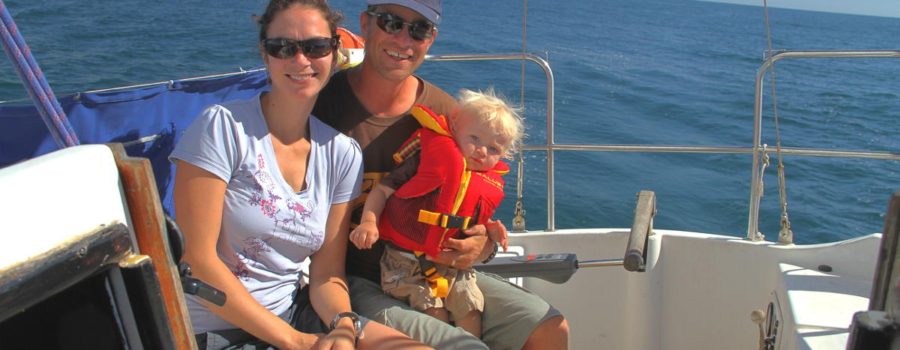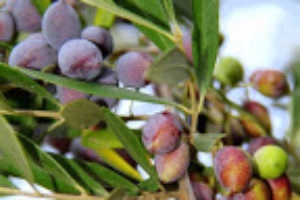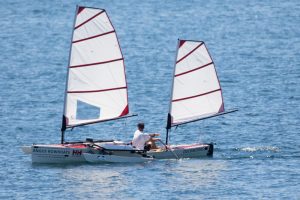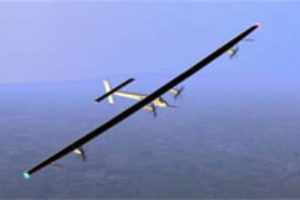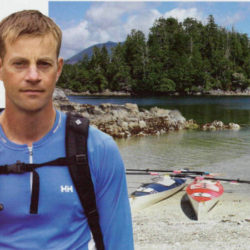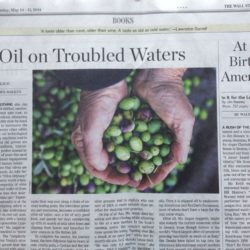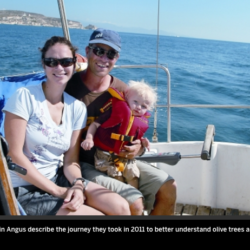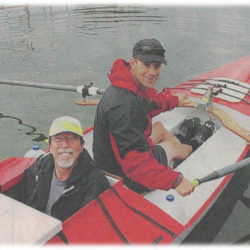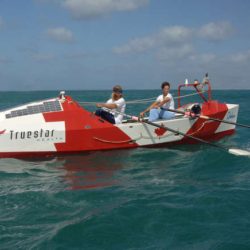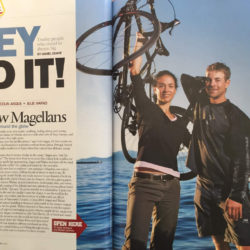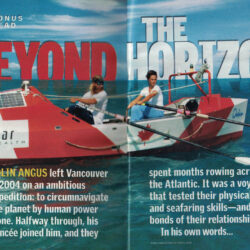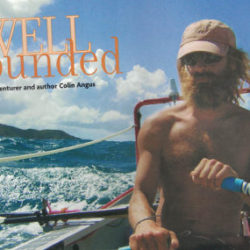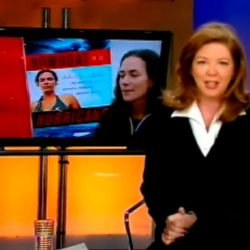We’ve made to France!Our maiden voyage sailing 400 km from Barcelona to the Marseille region went well.Our 28’ sailboat, Isis, handled the open sea with aplomb, and the sailing rig is a dream – much more efficient than the boat I sailed across the Pacific 20 years ago.Our boat has an electric autopilot and a roller furling headsail, conveniences that make sailing with a baby possible.
So what’s it like sailing with an eleven-month old baby?Not easy.While Leif took to the seas with enthusiasm, he’s a high-maintenance baby at the best of times, meaning a lot of precious time is spent tending his needs.The most challenging aspect is night sailing when someone needs to be on watch constantly.This can be exhausting at the best of times, but when you throw in an energetic baby that enjoys feeding five times through the night, rises at six am, and then crawls around like the Energizer Bunny on steroids, things can be a little wearisome.The good news is Leif doesn’t get seasick, and seems more stimulated in the boat than he does at home.
Traffic on the Mediterranean is quieter than expected, and we’ve found it relatively easy navigating our way along the coast.There are few offshore hazards such as reefs, and the greater danger is the quickly changing weather.We are travelling on a large body of water with shallow depths, so storms rapidly build steep powerful seas.
From Barcelona, we spent a couple of days coastal hopping, staying in marinas or anchoring out.The shoreline alternated between rocky convoluted stretches and expansive beaches.The beach areas were generally backed with sprawling condos, resorts and highways while the rocky headlands were less habituated and more interesting to regard.
Generally we anchored, as it’s free, and it also allows us to stay in the more wild and remote areas.On our last night in Spain, we anchored in a wildlife preserve and were pleased to see our first pod of dolphins.Later, swimming with mask and snorkel, we were treated to a colourful array of fish swimming amongst the rocks beneath our boat.
We planned on sailing straight across the Golfe de Lion, a stretch of water that has the greatest percentage of gale-force winds on the Mediterranean.A major storm was predicted to cross our path, so we opted to wait a night in the Spanish fishing/tourist village of Palamos while the Tramontane winds pumped along the Pyrenees Mountains and out into the gulf.
It took us 26 hours to sail across the gulf from Spain into France.Our destination was the Calanques, a wild stretch of shoreline which possesses one of the most stunning geographical features in the western Mediterranean.High limestone cliffs eroded by ancient streams are cut by steep narrow fjords.The narrow inlets are lined with steep spires, arches and cliffs hundreds of feet high.We’d heard vivid descriptions of the Calanques, but it wasn’t until we arrived in our small boat, that we truly were able to appreciate their splendour.
The numerous caves in the Calanques were used by ancient man, and cave paintings in the area have been dated to 27000 years BC.For us, the Calanques were of great interest because wild olive trees live in this area.Due to the rugged terrain, the area has never been used for agriculture which means it is less likely the wild olive trees have bred with domestic trees.This means the olive trees in the Calanques will be good stock for our genetic sampling of the original native olive trees in Europe.Sure enough, half an hour after scrambling up steep limestone cliffs, we found an olive tree flourishing in the hot dry environment.The modest sized tree – about 10’ high – possessed a thin offering of pea-sized olives throughout its branches.We sampled the extremely bitter fruit, and Julie tucked a branch into a ziplock bag for later DNA analysis.Twenty feet above the olive tree, we came across a large cave, perfectly sized for a large caveman family.We imagined the early Cro-Magnon French, relaxing at the entrance of their cave eating fresh ibex and olives (there’s actually no evidence to support or dispute the idea of cavemen eating olives).
The severe Tramontane winds (blowing at 40 knots) had stirred up the waters of the Mediterranean, and swimming in the turquoise waters of the Calanques was quite a shock after our experience with the warm waters near Barcelona.Park officials told us the temperature had dropped from 24 degrees to 18 degrees overnight with the passage of the storm.
After spending a few days in the Calanques, we sailed into the charming town of Cassis where we are currently.We could use a lot of superlatives to describe Cassis, but instead you can see it, along with the rest of our sailing trip so far in the photo gallery we’ve just posted…
Next, we’ll be sailing through the French Riviera and on through to Italy. Stay tuned for an upcoming update where we’ll give the details about sailing on the Med – everything from boat costs, marinas, anchoring, etc. It’s probably cheaper than you might expect…

